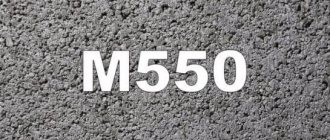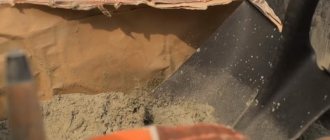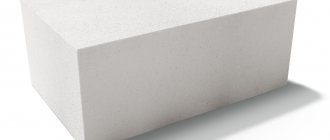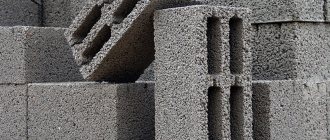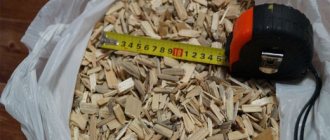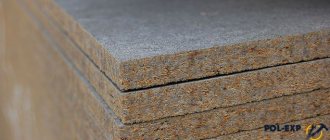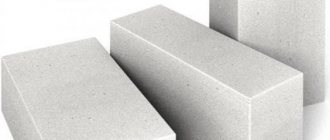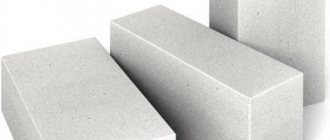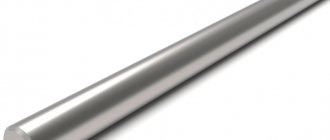Composite reinforcement is a relatively new material in construction, which, despite its age, has managed to positively establish itself among the construction community and has firmly established itself on the construction site, displacing steel reinforcement. This is a material consisting of several components. More precisely, there are two main components:
- Fibers that carry the main load and stretch continuously along the entire length of the reinforcing bar. The volume of fibers must be at least 75% of the weight of the reinforcement.
- A binder based on thermosetting resins, thanks to which the components are combined into a single whole.
The diameter of the reinforcement, according to the regulatory document GOST 31938-2012, is installed and used as follows: 4, 6, 8, 10, 12, 14, 16, 18, 20, 22, 25, 28 and 32 mm. Of these, diameters from 4 to 8 are produced and sold in twisted form (coils, drums), which facilitates transportation. The remaining diameters are produced and sold in rods with a standard length of 6 - 12 meters.
The composition of composite reinforcement varies, and depending on the components, the properties and cost of the finished product change.
Classification
Manufacturers of building materials produce 5 types of composite plastic reinforcement:
- glass composite or fiberglass - ASC;
- carbon composite – AUK;
- basalt composite – ABK;
- aramidocomposite - AAC;
- combined – ACC.
From the name you can understand which material is the basic basis for the manufacture of plastic fittings.
General description and manufacturing technology
Due to its low cost and good performance, fiberglass reinforcement is most widely used. Its strength is slightly lower than other composites, but the cost savings justify its use. For its production use:
- staple fiberglass;
- epoxy thermosetting resins as a binder;
- special polymer additives to increase strength and improve other characteristics.
Composite fiberglass reinforcement for foundations can have a smooth or corrugated surface. According to the manufacturing technology, bundles of the required diameter are first formed from fiberglass and impregnated with epoxy resin. Afterwards, to obtain a corrugated variable cross-section, the surface of the smooth rod is wrapped in a spiral with a cord, which is also woven from fiberglass. Then the resulting blanks are polymerized in an oven at high temperature and, after cooling, cut into straight sections or wound into coils.
To sum it up.
As can be seen from the list, making a strip foundation on fiberglass reinforcement is not difficult and does not require special knowledge. Having understood what fiberglass reinforcement is, everyone can significantly reduce their time and money for installing a box and at the same time benefit from the quality and strength of the material.
The only condition is that the construction be carried out in stages. Each stage should begin after the previous one is completely completed. When installing a foundation, calculations of depth and thickness are very important, and software calculations on a computer help with this. By calculating future data in this way, you can significantly reduce the time spent on unnecessary measurements and unnecessary consumption of materials.
The choice of materials for installation and manufacturing also plays a significant role. It is worth giving preference to high-quality, certified material and components when receiving it. Using good material and accurately following the action plan is the key to obtaining a reliable foundation in the future.
It is worth noting that the entire building and its future condition will directly depend on the correctness of the foundation, since it is the main support for the future building and its installation should be taken as seriously as possible.
Specifications
The production of periodic profiles and technical characteristics of fiberglass reinforcement are regulated by GOST 31938-2012. The standard defines:
- types of plastic fittings depending on the materials used;
- nominal diameters ranging from 4 to 32 mm;
- the length of straight rods is from 0.5 to 12 meters;
- possibility of supplying materials in coils with a diameter of up to 8 mm inclusive;
- markings and symbols;
- quality control methods;
- storage and transportation rules.
Characteristics of types of composite reinforcement.
The weight of the material depends on the size of the cross section and can range from 0.02 to 0.42 kg/m.
Weight of plastic fittings.
Data on ultimate strength and elasticity given in GOST show that these parameters exceed the characteristics of rolled steel with the same diameters. This allows the use of polymer reinforcement in particularly critical structures or when it is necessary to reduce the cross-sections of reinforcing materials.
Benefits and where to use it
The popularity of using fiberglass is associated with a lot of advantages, including:
- No vulnerability to corrosive processes. Due to this property, fiberglass can be used in environments with high humidity or other aggressive influences.
- Small dimensions and weight. This facilitates comfortable transportation and use of the material. The reinforcement process does not require much human power. The material is easily wound into coils and easily delivered to the construction site.
- Affordable price. Composite products are much cheaper than their steel counterparts.
- Increased strength properties. Fiberglass reinforcement is characterized by high strength, which is 2-2.5 times higher than the strength of metal rods with the same cross-section.
- Low thermal conductivity, resistance to electric current. Concrete structures are not able to protect the building from heat loss, and they are additionally insulated with insulating material, so the low thermal conductivity properties of the composite do not play a big role. The non-conductivity of electricity is an important point that protects the building from discharges.
However, in addition to the positive features, reinforcing a strip foundation with fiberglass reinforcement also has disadvantages:
- The structure is not resistant to bending, so it is not able to absorb tensile loads. Since the reinforcement is laid on a concrete surface, it is already subjected to extreme tension.
- The areas of use of the material are limited, since it can only be installed in tension.
- Fiberglass is not suitable for the construction of large-sized and multi-story buildings. Therefore, it is most often in demand when solving simple problems by beginners.
- Inability to use welding equipment to connect elements. In most cases, welding is used in the construction of large frames. The method of step-by-step knitting of rods is suitable for arranging the foundation of a private house.
The material appeared relatively recently and is considered not fully studied.
Application areas include both residential and industrial construction. The use of fiberglass reinforcement in the foundation is in great demand, which is associated with a number of advantages over concrete structures.
Today, such reinforcement is used to strengthen the banks of reservoirs and road surfaces located in problem areas with constant aggressive influences.
In private construction, products are needed to strengthen:
- Concrete structures that perform enclosing functions. In this case, it is prohibited to use material for reinforcing load-bearing structures.
- Foundations of strip or other type.
- Foam concrete or aerated concrete masonry.
Area and method of application
Plastic reinforcement is a modern alternative to rolled metal. The identical shape of the rods allows its use using technology similar to steel. A reinforcement frame made of composite plastic reinforcement is formed in the form of a flat mesh or spatial structure designed to strengthen and increase the strength of reinforced concrete monoliths.
Polymer reinforcing materials are used in the construction of roads, bridges, hydraulic structures, columns, walls, ceilings, foundations and other monolithic structures.
The main load falls on the longitudinal rods of the structure. They have a larger cross-section and are located at a distance of no more than 300 mm from each other. Vertical and transverse elements can be located at a distance of 0.5-0.8 m. The connection of individual rods at intersections is carried out using polymer ties or knitting wire. The joining of individual rods on one horizontal line is carried out with an overlap.
Strengthening foundation structures.
When used to reinforce strip and other types of fiberglass foundations, rods with a diameter of 8 mm are used, which is equivalent to the use of 12 mm steel reinforcement.
Fiberglass reinforcement properties application.
Calculations for replacing steel reinforcement with fiberglass.
It is not difficult to carry out the procedure for such reinforcement with your own hands, if you adhere to the following algorithm.
- When installing the formwork, it is recommended to wrap its elements with parchment, which will allow them to be reused.
- On the inside of the formwork elements, using a horizontal level, mark the line up to which the concrete solution will be poured. This procedure will allow the concrete solution to be more evenly distributed throughout the entire internal volume of the future strip or any other foundation.
- The reinforcement elements with which you will strengthen your foundation must be covered with a layer of mortar at least 5 cm thick. In order to maintain this distance, you can use ordinary bricks that are laid on the bottom of the future foundation.
- Two rows of reinforcement are placed on the bricks laid at the bottom of the future foundation. In this case, it is desirable that solid rods be used, without joints. By measuring the length of the sides of the foundation being poured, you can easily determine how long the rod you will need to unwind and cut from the overall coil.
- After laying the longitudinal reinforcement bars, it is necessary to attach transverse jumpers to them, which are fixed with plastic clamps.
- Then you need to make the upper level of the reinforcement cage, which should be identical to the lower one. Both levels of such a frame, the cell dimensions of which should be approximately 150 mm, are connected using vertical jumpers.
- After making the reinforcement frame, they begin pouring the concrete solution. It is up to you to decide what concrete mixture will be used for this, but preference is most often given to the M400 brand solution.
Fiberglass reinforcement, application features.
Reinforcement of the foundation belt with fiberglass reinforcement.
Fiberglass reinforcement used in construction.
To quickly and continuously pour the foundation, it is better to use the services of a mixer
It is not difficult to calculate how much mortar you will need to fill the foundation: to do this, you need to calculate the perimeter of the future foundation, and then multiply the result by its width and depth. When pouring concrete mortar with your own hands, it is important not to forget that it must be compacted periodically so that air bubbles do not form in the foundation mass.
It will take 2-3 weeks for the poured concrete solution to completely harden. During this period, the poured foundation must be covered with a film from rain, and if the weather is hot outside, its surface must be periodically moistened with water.
Reinforcement made from fiberglass is a relatively new material on the domestic construction market that has not yet stood the test of time. Therefore, when using such material to reinforce concrete structures, you must understand the extent of responsibility for your choice.
Advantages of plastic fittings
When comparing composite rods with metal rods (we have already carried out a comparison in this article), a number of pros and cons of plastic reinforcement are clearly identified. These include:
- reducing the weight of the reinforcement frame by 5-7 times;
- higher strength, allowing the diameter of the rods to be reduced;
- resistance to corrosion and chemicals in concrete;
- simple installation and high speed of assembly of reinforcing frames;
- simplified technology for creating round and oval structures;
- excellent dielectric and thermal insulation properties;
- ease of transportation.
In addition, it should be noted that the length of rods for materials supplied in coils is unlimited, as well as simple cutting of blanks of the required length.
Reinforcement made on the basis of fiberglass is 20-30% inferior in strength to other composites, but is significantly cheaper. Therefore, such material is in higher demand in construction.
Comparison with metal fittings.
Fiberglass fittings, when compared with metal ones, have the following advantages.
- Reinforcement products of this type are characterized by high corrosion resistance: they are not afraid of both acidic and alkaline environments.
- Fiberglass reinforcement is made from polymer materials, so it is distinguished from metal products by very low thermal conductivity. Thanks to this, when used to reinforce foundations and other building structures, there are no cold bridges, which is especially important for our climatic conditions.
- This fittings, made of dielectric, do not conduct electric current and also do not generate radio interference.
- The specific gravity of fiberglass reinforcement is 8–10 times less when compared with its metal counterparts.
- The cost of metal and fiberglass products for reinforcing building structures is almost the same, but using fiberglass reinforcement is much more convenient.
- In terms of tensile strength, which for similar steel products is 400 MPa, fiberglass reinforcement is two to three times superior to metal rods.
- Fiberglass reinforcement is produced in rods 100–150 meters long, which makes it possible to install reinforcing structures practically without seams. Experts know that the joints of metal reinforcement are the weakest points of reinforcing frames. When strengthening foundations and other building structures using fiberglass products, there are no such weak points in the reinforcing frame.
- The advantage of using fiberglass reinforcement is that the consumer can purchase exactly as much product as he needs without paying for unexpected waste.
- To install and lay the reinforcement frame, which is made of fiberglass elements, there is no need to use a welding machine or other specialized equipment.
- Fiberglass reinforcement is much more convenient to transport, since it can be supplied to the customer both in rods and in coils, which can easily fit even into the trunk of a car.
- When foundations and other concrete structures are reinforced with fiberglass, cracks do not occur in the latter, which is explained by the fact that fiberglass and concrete have similar thermal expansion coefficients.
Flaws
Among the main disadvantages of composite reinforcing materials, experts call:
- low maximum temperature of use, not exceeding 60-70°C;
- poor mechanical stability under lateral loads;
- the impossibility of bending with a small angle of curvature and the need to use special elements.
It should be noted that there is no regulatory framework for the use of polymers for concrete reinforcement and, often, unreliable technical data from the manufacturer of the material. This makes calculations difficult and forces structures to be assembled with a safety margin.
Technology of foundation reinforcement with composite materials
The low weight of plastic reinforcement for the foundation simplifies the process of assembling a reinforcement frame of any design. At the same time, due to the increased strength of the material, the cross-sectional diameter is taken one number less than for metal analogues.
The technological process of installing concrete monolithic structures using polymer rods consists of the following stages:
- installation of formwork and marking the level of pouring concrete mixture;
- assembly and installation of the reinforcing frame;
- pouring concrete into formwork;
- removal of formwork panels.
Work on the installation of reinforced monolithic structures must be carried out in accordance with the adopted design decisions. The deck configuration must fully correspond to the size and shape of the foundation. As formwork material, you can use standard factory-made panels, boards, moisture-resistant plywood or chipboard. For permanent formwork, expanded polystyrene sheets are most often used.
After assembling and securing the formwork panels, on their inside, using a water level, mark the upper limit of pouring the concrete mixture. This will reduce the time it takes to complete the job and help distribute the concrete more evenly.
Spatial reinforcing frame for strip foundation
The foundation reinforcement scheme, laying and rod diameter are always indicated in the project. The use of composite reinforcement, especially those based on carbon fiber, makes it possible to reduce the diameter of the rods by one size. The laying of the material must exactly correspond to the calculated data. The frame is assembled on a level area.
The work begins with cutting the workpieces. To do this, pieces of the required length are unwound from the coil and placed on stands at a height of 35-50 mm above the support pad or ground. After this, the transverse jumpers are laid according to the drawing, and at the intersections they are tied with wire or ties. In this way, the bottom row of the spatial reinforcement frame will be assembled.
At the next stage, it is necessary to assemble a lattice completely similar to the first one, lay it on top and then cut the vertical posts to the designed length. The first post is tied at the corner of the flat gratings, the second at the adjacent intersection, as a result, a spatial structure is gradually formed. If there are more horizontal rows, then the second grid is fixed at the required height, and then the next one is fixed. The vertical post in this case is one whole segment.
When assembling the frame, it is necessary to remember that the ends of the reinforcing bars should be located at a distance of 35-50 mm from the formwork. This will create a protective layer of concrete and increase the service life of the structure. For this purpose, it is very convenient to use special plastic clamps.
Plastic fasteners.
It is necessary to pour a sand-crushed stone cushion at the bottom of the trench and compact it well. After this, it is recommended to cover the sand layer with geotextile or waterproofing material. This will prevent moisture from entering the concrete and the germination of weeds.
Horizontal reinforcement of slab foundations
When pouring slab-type foundations, horizontal reinforcement technology is used. Its main feature is the absence of turning and adjacent sections. Usually these are two grids located one above the other from long straight rods and vertical posts.
All work is carried out on site. First, according to the design drawing, the lower mesh is knitted, and the upper mesh is laid on top of it. After this, vertical posts are installed, as described for strip structures. The lower mesh must be installed on stands.
What types of composite reinforcement are there?
The classification of composite reinforcement in accordance with the composition of the fibers bearing the main load is as follows:
- fiberglass,
- basalt-composite;
- carbon composite,
- aramidocomposite
- combined composite reinforcement.
In the latter option, different fibers are combined in the required proportions. The best option in terms of cost and properties is fiberglass reinforcement, which has become most widespread.
Particular attention should be paid to the outer shell of composite reinforcement. The reinforcement (both composite and steel) must adhere as tightly as possible to the concrete it reinforces, and it is the outer surface that solves this problem. Different manufacturers have different shell designs; for example, somewhere there are protrusions of fibers of a certain shape, somewhere there is coarse sand, etc.

